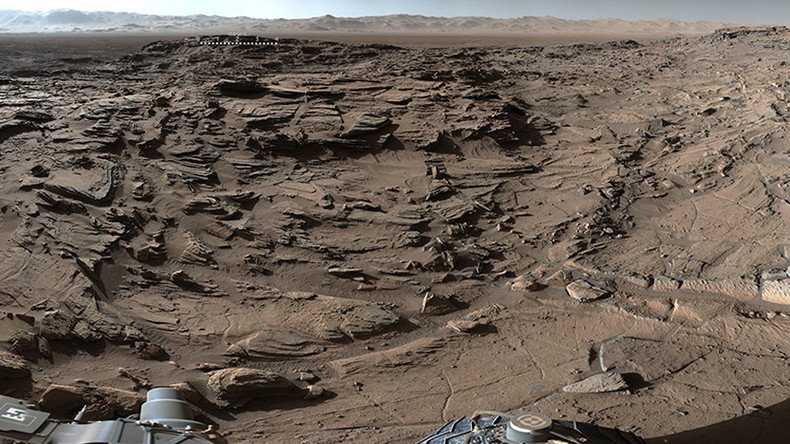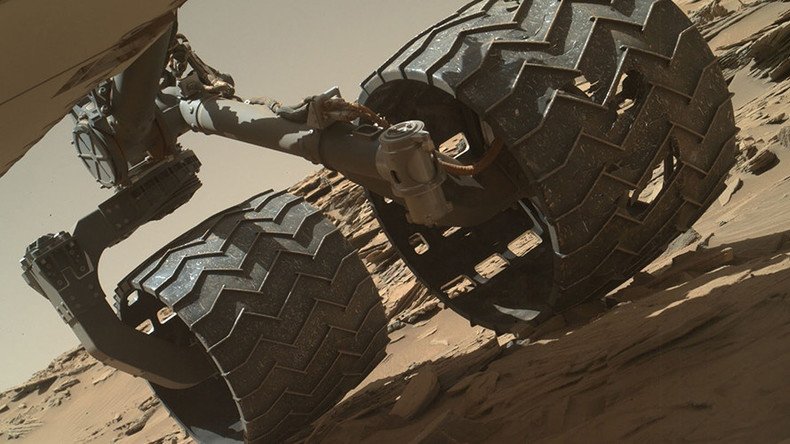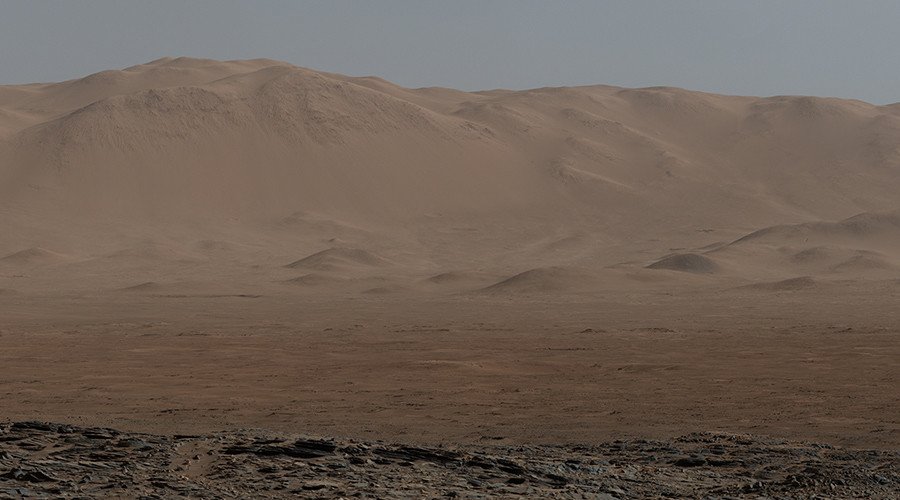Stunning 360° Mars panorama as Curiosity reaches highest-ever vantage point

NASA’s Curiosity Rover overcame rough terrain to climb the Naukluft Plateau, eroded by millions of years of winds. Operators now need its wheels to last for the most important parts of its remaining mission, searching for evidence of ancient life forms.
During its 44-month long mission, the vehicle has traveled 12.7km across the Martian surface, but few as difficult as the knobby and angled surface it has navigated this spring. It moved from dunes, up towards its next mountain destination, to take all-around pics of the bleak vista.
And the journey is taking its toll on the Curiosity’s six aluminum wheels.
“The roughness of the terrain on the plateau raised concern that driving on it could be especially damaging to Curiosity's wheels, as was terrain Curiosity crossed before reaching the base of Mount Sharp. Holes and tears in the rover's aluminum wheels became noticeable in 2013,” wrote NASA in its latest press release.

The US space agency has been doing tests on an imitation Mars surface in California’s Jet Propulsion Laboratories, to ensure the survival of the $2.5-billion interplanetary craft, and adjusting its routes accordingly.
"We carefully inspect and trend the condition of the wheels," reassured Steve Lee, Curiosity's deputy project manager at JPL. "Cracks and punctures have been gradually accumulating at the pace we anticipated, based on testing we performed at JPL. Given our longevity projections, I am confident these wheels will get us to the destinations on Mount Sharp that have been in our plans since before landing."
Curiosity’s next target can be seen in the latest photos it has produced, and is known as Mount Sharp, a 5.5km elevation, right at the center of the Gale Crater, where curiosity has operated since its landing.
Fury Road: See the rugged Martian plateau I crossed. #360 view https://t.co/BGzohCrbVs Info https://t.co/FEv51R9i37pic.twitter.com/PFnefVYW1y
— Curiosity Rover (@MarsCuriosity) April 27, 2016
The foot of the mountain houses three key targets, which have been scouted from space, but never photographed up close or sampled. These are hematite, an iron-oxide mineral, clay mineral deposits, and sulfates. While these finds will not be visually spectacular, they should provide pieces to the puzzle Curiosity has been trying to solve since its landing back in 2012.
“By examining them with Curiosity, researchers hope to gain a better understanding of how long ancient environmental conditions remained favorable for microbial life, if it was ever present on Mars, before conditions became drier and less favorable,” wrote NASA.

The nuclear-powered Curiosity has already detected evidence of water on the Red Planet, and signs that it once possessed a denser atmosphere than currently, both encouraging signs.
Now, it faces an ambitious 7.5km trek to its mineral deposit targets, its greatest test, considering the slow degradation of its equipment.












